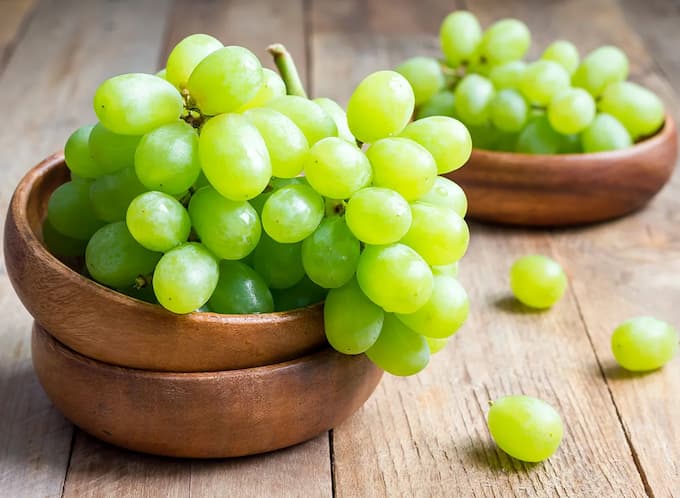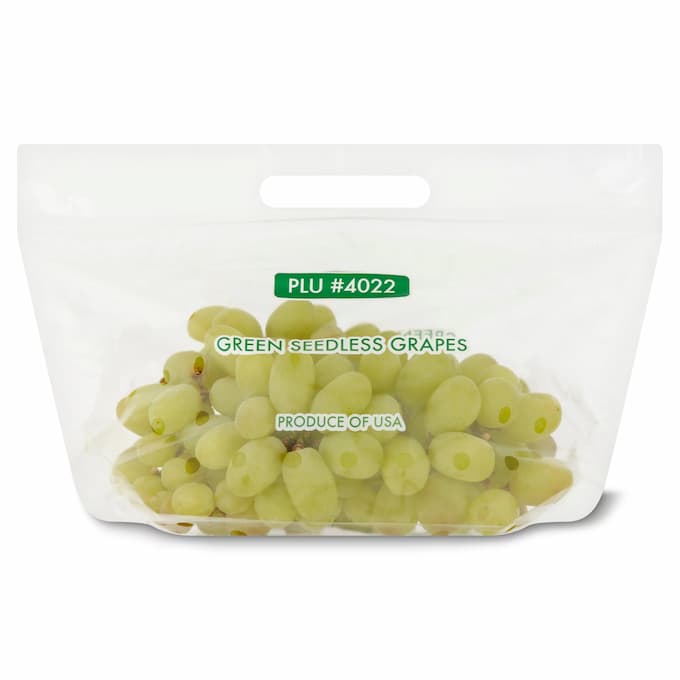Grapes are a fantastic little fruit. You can put them in fruit dishes and salads, or make wine or raisins out of them. They’re tasty and juicy when they are fresh. Many retailers sell grapes in enormous bunches, and regrettably, they could go bad before you finish them! You might already understand how to maintain food fresh in the refrigerator for several weeks, but how can you store grapes in the refrigerator to keep them fresher for longer? Here’s what you should know. Let’s see the best way to store grapes!

Washing and preparing your grapes
Preparing your grapes is the very first stage in storing them. Here’s what you should do:
Step 1: Store unwashed grapes.
Washing fruits and veggies, particularly those with thinner skins, remove some of their protective coats, making them more susceptible to spoilage. Wash your grapes only when you’re ready to consume them.
Step 2: When you’re prepared to eat the grapes, rinse them in plain, cold water.
To avoid skin damage, rub them carefully with your hands and avoid using chemical soaps or bleach. Chemicals can penetrate the skin of the grape, rendering it inedible.
Step 3: Examine the grape bunches thoroughly for any bad ones.
Remove any rotten grapes as soon as possible! You might either dispose of them or compost them.
Step 4: Divide bigger grape bunches into smaller clusters for storage.
This makes them easy to store and promotes air circulation. Air circulation minimizes the likelihood of mold and disease and extends shelf life.
Best Way to Store Grapes
Grapes is a very temperamental fruit. If you don’t keep them properly, they can shrivel and even mold. When you realize that grapes are basically berries, and berries have a famously limited shelf-life, it’s a little surprising that grapes last as long as they do in your fridge. In reality, if stored properly, typical table grapes can keep for a long period. According to Harold McGee in On Food and Cooking: The Science and Lore of the Kitchen, “Thompson seedless grapes,” the most popular forms of table grape in the United States, can all be kept for as long as 2 months at 32°F/0°C if picked in the temperature of the morning and handled with antimicrobial sulfur dioxide.

The grapes you purchase from the grocery store, on the other hand, are unlikely to last 2 months even if kept at 32°F. Grapes, on the other hand, perform best when stored in the refrigerator. According to the California Table Grape Commission, the ideal storage temperatures for grapes are 30-32°F with highly humid conditions, around 90-95 percent. This is why the ideal place for storing grapes in your fridge is the high-moisture crisper drawer.
But keep in mind that excessive humidity is not the same as moisture exposure. In accordance with the California Table Grape Commission, store your grapes away from direct exposure to water and keep them unwashed because excessive water will reduce their shelf life. They also recommend keeping your grapes away from a “cooling unit’s direct airflow,” as this will speed up the dehydration process and make your grapes shrivel.
Make the most of your grapes by following these simple storage guidelines:
Store Grapes In the Fridge
Fresh grapes should be kept in the refrigerator. They grow around 30-32 degrees Fahrenheit with 90-95% humidity, so put them at the back of your crisper drawer (the coolest place in the fridge). Also, since grapes absorb aromas, avoid storing them right next to stinky foods like onions or fish.
Keep Unwashed
When you bring home a new box of grapes, you may be tempted to rinse them right away – but don’t. You would like to keep the grapes as dry as you can until you’re ready to eat them because any moisture can hasten the decaying procedure and make the fruit rot faster. Once you are prepared to eat, lay the grapes in a colander and gently rinse them under cold, running water.
Allow Them to Breathe
Grapes do not require any specific storage containers. In truth, the vented bag or ziplock baggie in which they were delivered was excellent. This is why: Grapes require a little breathing space in order to live as long as feasible. Placing them in an airtight container (such as a zip-top bag) increases humidity, which eventually turns into moisture, which accelerates spoiling. If you’ve discarded the original packing, any well-ventilated box will suffice.
Should you freeze them?
If you do not think you will be able to use your grapes before they turn bad, try freezing them. Frozen grapes are a great addition to smoothies, they can be added to drinks in place of ice, and make a refreshing and healthful snack on a hot day.
4 Tips for Grape Storage
Here are some suggestions for keeping a package of grapes fresh for as long as possible:
- Purchase them as fresh as possible: When shopping, look for a box, bunch, or container of grapes that is firm and bright in its original packaging. Choosing your grapes carefully will offer you an advantage in keeping them fresh.
- Store in a cool place: Avoid keeping grapes at room temperature if you do not plan to serve them that day. If you intend to serve the grapes within one week, store them in the back of the refrigerator or in a crisper drawer with a high moisture setting (away from fruits and vegetables that require lower humidity. To keep the fruits fresher for longer, place them in a freezer set to 32 degrees Fahrenheit)
- Select the proper container: Keeping grapes in an airtight packet or plastic bag is not optimal for preserving their freshness because it restricts circulation. Keep the grapes in their natural, ventilated container, with plenty of room between them and direct ventilation.
- Proper air circulation is essential: To prevent spoilage, grapes require careful air movement. Storing a bunch adjacent to the vent of a freezer or fridge will result in excessive direct exposure to the air, which can dry out the fruit.

How to tell if your grapes are still fresh
Your grapes will go rotten no matter how you preserve them. Here are a few warning indicators to check for so you can catch them just as they turn:
Step 1: Look for any discoloration.
Brown or black marks on your grapes may indicate that they are going bad. Because grapes have extremely thin skin, bruising could be a result of friction or tearing of the skin. Keep a watch out for other indicators of discoloration if you observe discoloration.
Step 2: Examine the texture of the grapes.
Except when it comes to frozen grapes, the optimum texture of a grape is solid but with a little give. If your grapes are really firm, they are not quite ripe, and if they’re mushy, then they are overripe. When in doubt, squish it! The texture is frequently the most dependable method to detect how fresh a grape is.

Step 3: Take a whiff of your grapes.
If they begin to smell terrible, they are most likely going bad. It’s worth noting, though, that grapes could sometimes absorb odors due to their thin skins.
If you keep your grapes near strong-smelling veggies such as onions, garlic, or peppers, they may start to smell like them. In that situation, the smell is not the most trustworthy indicator of freshness, and you should return to texture.
You may now eat deliciously fresh grapes wherever you want! Grapes stored properly might last two times as long as they would otherwise, or even longer if frozen. Keep a close eye on their color, texture, and scent, and store them somewhere cool. Hope that this guide about the best way to store grapes is useful for you. Have fun with your lovely, fresh grapes!
Above are the best and detail answer best way to store grapes from https://bluevelvetrestaurant.com. Hope you have more information after reading our sharing.
